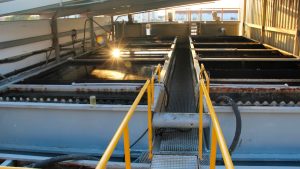According to the latest reports, the Australian government has been aiming to complete around 20 civil construction projects in the upcoming years including Oceanside Kawana, Merrifield etc worth billions of Australian dollars. This clearly shows how much of the weight Australian authorities put on their civil construction industry. Civil construction is undoubtedly one major aspect that shapes Australia’s infrastructure and drives economic growth. However, the construction industry faces increasing pressure to deliver faster, safer, and more sustainable results. This is where they move the attention to the implementation of cutting-edge technologies to plan, design, execute, and maintain those projects.
In this article, we explore the major tech trends that reshape civil construction in Australia.
In this article, we explore the major tech trends that reshape civil construction in Australia.
We will understand
- What is Civil Construction in Australia?
- Top Tech Trends that Revolutionise Civil Construction in Australia
- Artificial Intelligence (AI) and Machine Learning (ML)
- Sustainable Construction Technologies
- Robotics
- Digital Twin Technology
3. Enhancing Australian Civil Construction Projects with Latest Technologies
What is Civil Construction in Australia?

Before moving to the Australian civil construction domain, we will clarify the fundamentals of this concept.
- Civil construction is a branch of civil engineering focused on designing, constructing, and maintaining infrastructure that plays a key role in society’s daily functioning. This field covers a wide range of projects, such as roads, bridges, tunnels, airports, dams, and water systems, which are essential for transportation, water management, and other vital services.
- So, basically, civil construction involves working with materials like earth, water, and concrete to shape both natural landscapes and man-made environments.
- When it comes to Australia, civil construction significantly impacts urban development and the economy, as infrastructure projects support population growth, commerce, and transportation. Civil contractors tend to collaborate with municipalities or government agencies to ensure that these projects meet strict design specifications and safety standards. The industry relies on teams of engineers, designers, and construction workers who work together to deliver high-quality infrastructure.
- Civil construction projects across Australia include building roads, railways, and airports, as well as managing water systems like reservoirs and sewerage networks. Earthworks, such as tunnels and flood mitigation, are also common. These projects make the everyday life of the Australian general public easier by supporting essential services, improving transportation, and ensuring access to water and sanitation.
Top Tech Trends that Revolutionise Civil Construction in Australia

Artificial Intelligence (AI) and Machine Learning (ML)
AI and ML are transforming civil construction projects in Australia unstoppably nowadays. The reason these are so popular is that AI and ML make them more efficient and accurate.
AI-powered tools help with predictive maintenance, which allows construction teams to spot potential issues with equipment and structures before they turn into costly problems. This means fewer breakdowns and repairs, saving both time and money. On the other hand, Machine Learning helps construction companies analyse data from past projects to improve decision-making on new ones. Since they can learn from previous patterns, AI can predict the best way to allocate resources like materials and labour, which leads to smarter and more efficient resource management.
AI also optimises construction sites by monitoring real-time data, helping teams adjust plans on the go to avoid delays or mistakes. This technology allows for better planning, fewer errors, and faster project completion.
One of the most impactful uses of AI in Australia’s civil construction is in the management of large-scale projects, where coordination between multiple teams is key. AI systems can track progress, suggest changes, and make sure everyone stays on schedule, ultimately reducing costs and improving safety on construction sites. Machine Learning models can analyse data to predict potential risks, such as weather impacts or supply chain delays, helping teams prepare for these challenges in advance. As the industry grows, more construction companies in Australia are adopting AI to manage everything from small-scale repairs to massive infrastructure projects.
AI-powered tools help with predictive maintenance, which allows construction teams to spot potential issues with equipment and structures before they turn into costly problems. This means fewer breakdowns and repairs, saving both time and money. On the other hand, Machine Learning helps construction companies analyse data from past projects to improve decision-making on new ones. Since they can learn from previous patterns, AI can predict the best way to allocate resources like materials and labour, which leads to smarter and more efficient resource management.
AI also optimises construction sites by monitoring real-time data, helping teams adjust plans on the go to avoid delays or mistakes. This technology allows for better planning, fewer errors, and faster project completion.
One of the most impactful uses of AI in Australia’s civil construction is in the management of large-scale projects, where coordination between multiple teams is key. AI systems can track progress, suggest changes, and make sure everyone stays on schedule, ultimately reducing costs and improving safety on construction sites. Machine Learning models can analyse data to predict potential risks, such as weather impacts or supply chain delays, helping teams prepare for these challenges in advance. As the industry grows, more construction companies in Australia are adopting AI to manage everything from small-scale repairs to massive infrastructure projects.
Sustainable Construction Technologies
Sustainability has become a top priority in the Australian construction industry, mainly due to the growing concerns about the environmental impact of building projects.
With climate change, resource depletion, and pollution posing significant threats, the construction industry is under pressure to adopt eco-friendly practices that minimise harm to the environment. However, it is not as smooth as it seems to be.
This is where sustainable construction technologies are helping Australia reduce the carbon footprint of civil projects while still meeting the country’s infrastructure needs. Green technologies come under the spotlight by using carbon-neutral building materials, which produce less pollution during production and installation. These materials help cut down on greenhouse gas emissions, making construction projects more environmentally responsible.
Another thing is opting for energy-efficient designs. They also help by lowering the amount of energy needed to power buildings and infrastructure. These designs focus on natural lighting, better insulation, and renewable energy sources like solar panels to reduce overall energy consumption. Water conservation systems are another important part of sustainable construction. Australia, being prone to droughts, benefits from technologies that reduce water use in construction projects and help recycle water within building systems.
As you can see, sustainable construction technologies not only reduce the environmental footprint of projects but also offer long-term cost savings.
With climate change, resource depletion, and pollution posing significant threats, the construction industry is under pressure to adopt eco-friendly practices that minimise harm to the environment. However, it is not as smooth as it seems to be.
This is where sustainable construction technologies are helping Australia reduce the carbon footprint of civil projects while still meeting the country’s infrastructure needs. Green technologies come under the spotlight by using carbon-neutral building materials, which produce less pollution during production and installation. These materials help cut down on greenhouse gas emissions, making construction projects more environmentally responsible.
Another thing is opting for energy-efficient designs. They also help by lowering the amount of energy needed to power buildings and infrastructure. These designs focus on natural lighting, better insulation, and renewable energy sources like solar panels to reduce overall energy consumption. Water conservation systems are another important part of sustainable construction. Australia, being prone to droughts, benefits from technologies that reduce water use in construction projects and help recycle water within building systems.
As you can see, sustainable construction technologies not only reduce the environmental footprint of projects but also offer long-term cost savings.
Robotics
Robotics is rapidly changing how civil construction projects are done in Australia. Have you noticed yet?
This makes work faster, safer, and more efficient. Construction robots are being implemented across various tasks, particularly for jobs that are repetitive or dangerous, such as bricklaying, welding, and demolition. These robots can handle heavy lifting and precise work without getting tired, which increases productivity and speeds up project timelines. As they can take on risky tasks, robots also help reduce accidents and injuries on construction sites, making the work environment safer for human workers.
In addition, robots allow construction teams to focus on more complex tasks that require human judgement and creativity, like project planning or solving on-site problems. As technology advances, robots in civil construction are becoming more versatile, with some even equipped with AI capabilities that allow them to learn and adapt to changing conditions on the job site. This adaptability improves the quality and precision of work, ensuring fewer errors and reducing the need for costly rework.
This makes work faster, safer, and more efficient. Construction robots are being implemented across various tasks, particularly for jobs that are repetitive or dangerous, such as bricklaying, welding, and demolition. These robots can handle heavy lifting and precise work without getting tired, which increases productivity and speeds up project timelines. As they can take on risky tasks, robots also help reduce accidents and injuries on construction sites, making the work environment safer for human workers.
In addition, robots allow construction teams to focus on more complex tasks that require human judgement and creativity, like project planning or solving on-site problems. As technology advances, robots in civil construction are becoming more versatile, with some even equipped with AI capabilities that allow them to learn and adapt to changing conditions on the job site. This adaptability improves the quality and precision of work, ensuring fewer errors and reducing the need for costly rework.
Digital Twin Technology
The latter has become a must-have tool in civil construction in Australia as it allows builders and engineers to create virtual replicas of physical structures. This enables more precise planning and management.
These digital twin mirror real-world buildings, bridges, or other infrastructure, capturing every detail in a digital format. This technology allows teams to monitor construction projects in real time, using sensors and data to keep track of every aspect of the project, from materials used to environmental conditions. After analysing this data, construction managers can make informed, data-driven decisions that improve efficiency and reduce delays.
Digital Twin also enhances project lifecycle optimisation by providing insights into how a structure will perform over time. For instance, engineers in Australia can use digital twin to simulate how buildings will react to weather, stress, or wear and tear, allowing them to predict potential problems before they arise and schedule maintenance more effectively.
This mindful approach reduces downtime, lowers costs, and ensures the long-term durability of infrastructure.
These digital twin mirror real-world buildings, bridges, or other infrastructure, capturing every detail in a digital format. This technology allows teams to monitor construction projects in real time, using sensors and data to keep track of every aspect of the project, from materials used to environmental conditions. After analysing this data, construction managers can make informed, data-driven decisions that improve efficiency and reduce delays.
Digital Twin also enhances project lifecycle optimisation by providing insights into how a structure will perform over time. For instance, engineers in Australia can use digital twin to simulate how buildings will react to weather, stress, or wear and tear, allowing them to predict potential problems before they arise and schedule maintenance more effectively.
This mindful approach reduces downtime, lowers costs, and ensures the long-term durability of infrastructure.
Enhancing Australian Civil Construction Projects with Latest Technologies

It is no longer a secret that the future of civil construction in Australia lies in the power of cutting-edge technologies. With the right software partner, Australian authorities and construction companies can implement AI, robotics, and real-time data to deliver exceptional results while reducing risks. This transformative approach ensures that every project is not only faster and more efficient but also aligned with the sustainability goals of Australia.







